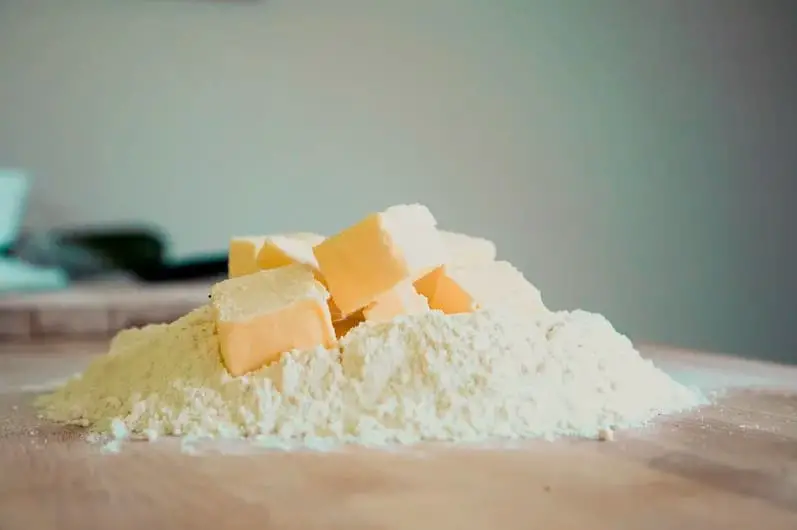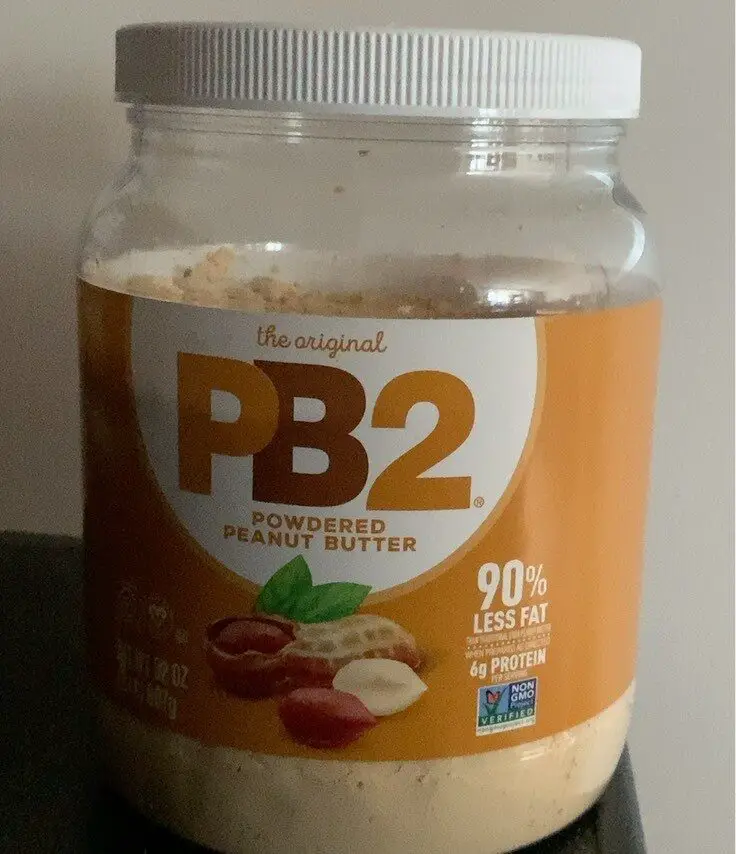Although we frequently buy our butter and margarine pre-packaged in the grocery store, there is nothing quite like the taste of homemade butter. But there are many different ways to make homemade butter, with powdered butter being one of many different varieties.
Powdered butter is a dehydrated form of butter that is handy for many different culinary uses. The main appeal of this butter product is that it can last a long time on the shelf. In the entire spectrum of processed foods, powdered butter benefits from needing fewer overall preservatives than some other types of dried foods.
Homemade powdered butter can bring a unique and wholesome flavor to any dishes that go well with butter. In this guide, we will thoroughly explore this type of butter and offer ways in which you can prepare it at home.

An Overview
When it comes to homemade powdered butter, some standard preservatives are often used, which means that those looking to buy this product for the first time should evaluate how it stacks up to fresh butter in terms of nutritional content. In many cases, powdered butter is made by subtracting the small amount of moisture that exists in a standard stick of butter.
As experts point out, this does not need to involve manipulating the fat content of butter, since fat is naturally devoid of water.
The final result of dehydrating butter is a versatile powder that can be used in many different kinds of foods. Powdered butter can be reconstituted and spread on toast, or used in various baking projects. One of the main benefits of powdered butter is in the ease of use in various baking recipes.
With standard butter, it can be extremely difficult to blend butter in with various dried elements like flour, baking soda, baking powder, and salt. It can blend seamlessly with these ingredients, cutting down on the time that it takes to prepare a given dough mixture.
Another major use of powdered butter is in popcorn and other snack products; popcorn makers get a lot of use out of this non-perishable butter product in designing quick-pop options for their popular snacks. In order to effectively preserve this dry butter product, a common trick is to include preservatives like sodium caseinate.
Another frequent addition to powder forms of butter is something that food makers label “non-fat milk solids.” These elements help with establishing a texture for the reconstituted product. As an additional way to preserve this non-perishable food element, an antioxidant can also be added. In addition to powdered butter, shoppers can get additional baking ingredients in a powder form, including powdered eggs, and powdered buttermilk. All of this can make baking a lot easier. Another main use for powdered butter, and other similar products is when a person needs to live in a remote area that may not have all of the conventional amenities enjoyed in a typical modern home or facility.
Can You Make Homemade Powdered Butter?
It’s actually not as hard as you might think. Like most things in preparedness, there is an information gap and then there is an experience gap. After bridging those you will know how to dehydrate butter and even create your own butter powder.
It’s not uncommon to store a number of dehydrated items. Dehydrated peanut butter is a great food to keep on hand for the long term.
Another essential is dehydrated buttermilk. Add to that some dehydrated butter and flour for homemade biscuits even in the worst-case scenario
How To Make Homemade Powdered Butter
While this might seem intimidating, don’t forget that the pilgrims knew how to make butter! It’s basically the process of separating cream through agitation or mixing. This can be done in many methods and we are going to focus on three methods in this section.
If you want to know how to dehydrate butter you should know how to make butter from scratch.
To make homemade butter by hand, you will need a whisk for this method and you will need some endurance in the forearms.
The first step is to get yourself a nice big bowl and put it in the fridge. The colder the cream the better it will hold air and then separate.
Next, fill your bowl with about 1 cup of heavy whipping cream.
Begin whisking.
- The cream will get thick quickly, but keep whisking.
- You want to whisk the cream until it gets airy and forms what are cold hard peaks. These are peaks that hold their shape when you remove the whisk.
- At this point, you have whipped cream.
- If you whisk a little longer your whipped cream will start to separate and you will see a liquid at the bottom of the bowl. Keep whipping for another 2 minutes or so and the whole bowl will be separated. Some cream will be floating and butterfat will be separated.
- Strain this through some cheesecloth and roll what remains into a nice tube inside your cheesecloth. You can also wrap this with plastic wrap.
- Let it chill and you will have butter
- Repeat step one from above but use your Kitchenaid mixing bowl.
- You can use more cream with your Kitchenaid because it won’t get tired like your arms!
- Turn the machine on high and let that thing whisk its little heart out.
- Look for the same process to take place as above.
- When your cream separates, repeat steps 8 and 9.
Make Homemade Butter with a Marble
This sounds a bit crazy but it really works and is a great way to get kids involved in the process.
- Place a quart or pint mason jar in the fridge.
- Fill it 1/3 of the way with the heavy cream.
- Drop a marble into the jar and screw on the lid.
- Shake slowly at first then increase your shaking as the time goes on and the whipping cream expands in volume.
- Pass this jar around and let others do the shaking.
- Once the mix separates repeat steps 8 and 9.
Homemade Powdered Almond Butter

Similar to powdered peanut butter, protein-rich PB2 Powdered Almond Butter is easy to prepare and easy to eat. Mix Almond PB2 with water and you can instantly enjoy great tasting almond butter that contains 90-percent less fat than traditional almond butter. And it’s also got nearly 70-percent fewer calories! Its soft and smooth texture, plus its quality and versatility, are unmatched by the other almond powders and flours currently available.
Active foodies are increasingly mindful of fat content, calorie counts and where the ingredients in their food come from. In fact, a growing number of athletes and health enthusiasts are turning to powdered nut butters because of their significant levels of protein.
Protein is crucial for maintaining a healthy body, especially for people who are always on the go. Most powdered almond butter contains an impressive 5 full grams of protein per 13-gram serving!
Free of preservatives, artificial flavors and artificial sweeteners, PB2 products also are void of any GMOs (genetically modified organisms). So, they’re perfect for serving a wide variety of dietary preferences. And along with being vegan and certified gluten-free, PB2 has been certified kosher by the Orthodox Union, the world’s largest kosher certification agency.
